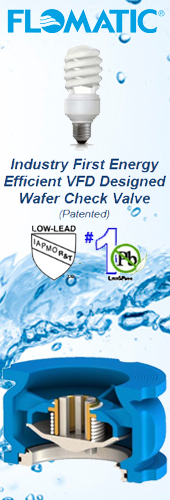Control Valves
Pressure Relief Valves protect against excessive pressure in pump stations, distribution systems, and transmission mains by opening when the inlet pressure exceeds a preset value and discharges high pressure water to waste pump suction or a zone of lower pressure.
The pressure relief valve is a type of valve used to control or limit the pressure in a system or vessel which can build up by a process upset, instrument or equipment failure, or fire. The pressure is relieved by allowing the pressurized fluid to flow from an auxiliary passage out of the system.
A water pressure relief valve is designed or set to open at a predetermined set pressure to protect pressure vessels and other equipment from being subjected to pressures that exceed their design limits. When the set pressure is exceeded, the relief valve becomes the "path of least resistance" as the valve is forced open and a portion of the fluid is diverted through the auxiliary route. Once it reaches the valve’s reseating pressure, the valve will close.


